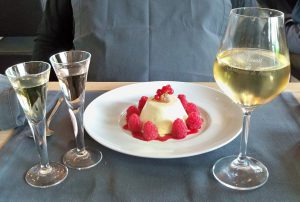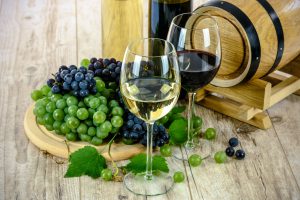When you’re inviting family or friends, it is not always easy to decide what to cook. But what is even harder is choosing the right wine for every course. There are some classics like white wine with fish and red wine with meat, but when it comes to the dessert we are less sure. So here are some advice to choose a great wine to serve with your dessert.
Fruit dessert
It is quite common to think that white wine goes better with dessert. It is often the case but there are some subtle details to know as there are a lot of different white wines and sometimes a better solution exists. You also have to take into account what you and your guests like, we can give you some advice but it is not a definite rule.
White fruits
To go with a dessert with white fruits like peaches, apricots, apples… whether it is a cake with frozen fruit puree or even a pie, you can choose a white wine and more precisely a sweet wine like a Coteaux du Layon (West of France) or a Sauternes (Bordeaux). You can also choose a champagne, white or pink. The sweet taste of champagne goes really well with fruits.
Red fruits
With a dessert made with red fruits, you can also choose a white wine, sweet as well or a dry white wine if you’re afraid of the taste being too sweet. You can also choose a light red wine because the sweet taste of red fruits goes really well with red wine. Finally, you can also choose a champagne.
Chocolate dessert
If your dessert is not only fruits but also chocolate, like a chocolate cake with fruit sorbet made from IQF fruits, you can serve champagne with it or sweet wine. Again, if you are afraid your dessert would be too sweet, you can choose a light red wine.
When you buy your wine, ask to taste it if possible, you will better know if it can go with what you intend to cook. And trust your instinct!


